Having played the piano for over 25 years, I have had some exposure to what we call music theory. As a piano teacher, I have had ample opportunity to describe to many new students exactly what music theory is and the basics of it.
So what is basic music theory? The basics of music theory are all of the key elements that make up music. They are the building blocks of music. The basics of music theory describe the “why” behind the “what”.
Let’s take a closer look at some of those basic music theory concepts.
Basic Music Theory Concepts
Here are some of the basic music theory concepts that I believe each student of music should be familiar with. This list is by no means exhaustive, but helpful in getting the basics.
The Staff
The staff is made up of five lines and four spaces. Each of those lines and spaces represent a tone, or a note in music. There is a treble clef and and a bass clef. Together, the treble clef and the bass clef make up what is called the grand staff. A treble clef represents higher notes in music, and bass clef represents lower notes in music.
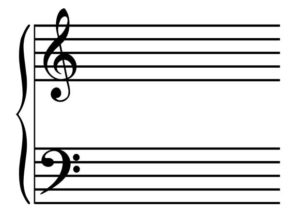
Note Names and Placement
Each of the lines and spaces on the staff make up a note in music. Each line and space has a name that comes from the musical alphabet. The musical alphabet consists of A, B, C, D, E, F, and G. A note on the staff has a specific correlation with the note on each instrument. There are multiple notes of A, B, C, D, E, F, and G because each note represents a tone, and a tone can be the same, but some tones are higher and some tones are lower. Check out these illustrations that have mnemonics to help you identify the lines and spaces.
Treble clef lines and spaces names:
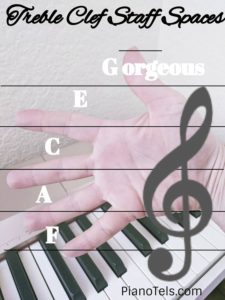
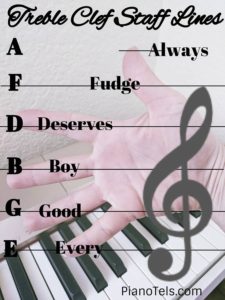
Bass clef lines and spaces names:
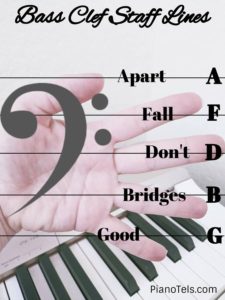
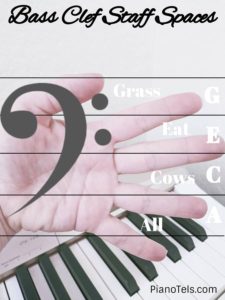
Musical Terms
There are some basic music terms that can help in understanding the language of music. Music is written in Italian. So there are some terms that may not make be in your language. Some essential musical terms are bar line, measure, sharp, slur, double bar line, natural, staccato, legato, flat, repeat, time signature, ritardando, melody, harmony, 8va, 1st and 2nd endings, 8vb, tie, D.C. al fine, key signature, accelerando, tempo, and dynamics.
Print Music Terms and Definitions:
Print Music Terms and Definitions Set 2:
Music Note & Rest Rhythms
In music, there are five basic notes. Each note has a certain amount of time that it is held. The following chart from thetamusic.com illustrates the note, its name, the rest it correlates with, and the number of beats per a 4/4 measure.
The basic notes are a whole note and rest (worth 4 counts), a half note and rest (worth 2 counts), a quarter note and rest (worth 1 count), and eighth note and rest (worth 1/2 count), and a sixteenth note and rest (worth 1/4 count).
Another basic note to know is the dotted half note and rest (worth 3 counts). When a dot is added to a note, it takes on an additional count of 1/2 the worth of the note. So a half note is worth 2 counts. Add a dot next to it and the dot is worth 1/2 of the 2 counts, so it is worth 1. Together, a dot and a half note (or a dotted half note) is worth 3 counts. The same is true any time a dot is added to a note or a rest.
Time Signatures

In written music, a time signature is written at the beginning of the music. There are three basic time signatures. You will most often see a 4/4, a 3/4, or a 2/4. The top number shows how many beats you can have per measure. The four on the bottom of the time signature shows that a quarter note gets one count.
Occasionally you will see a time signature that has a 2/2 or something similar. What this would mean is that there would be 2 counts per measure (as per the top number). The bottom two means that the half note gets one count. You can see how this would change the rhythm and the timing of the song.
Tempo
There are a lot of different tempos written in music. The tempo is written at the top of the sheet music at the beginning. A tempo determines the speed of a song – or how fast or slow to play it.
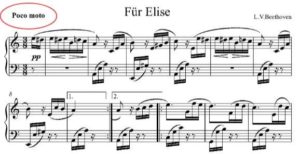
These tempos are commonly seen tempos and are written from slow to fast: largo, adagio, andante, moderato, allegro, and presto.
Dynamics
Dynamics are how loud or soft you play the music. You will see different markings in the music to represent the loudness or the softness desired. A “p” (written in lower case) represents piano. Piano is soft. An “f” (written in lower case) represents forte. Forte is loud. If you have “pp” it is extra soft, or quiet. This is called pianissimo. A “ff” would be extra loud. This is called fortissimo.
Dynamics can also be shown in markings. The “alligator mouth” shown here is showing a crescendo. A crescendo means to get louder. If it was written the other way, then it would be to get quieter, or softer. This is called a diminuendo, or a decrescendo.

Accidentals
Accidentals are anytime a note, or tone, is played either flat or sharp. A flat is a half step down from a tone and looks like a “b”. A sharp is a half step up and looks like a hashtag. A natural is when there are no longer any sharps or flats.
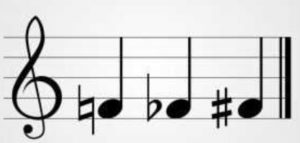
Scales
A scale is when a note goes from one tone and walks the steps up until it hits a higher tone. For example, a C major scale is C-D-E-F-G-A-B-C. The basics are major scales and minor scales. There is a pattern to scales. The major scale pattern is whole-whole-half-whole-whole-whole-half. You can find any major scale with this pattern.
The minor scale pattern is whole-half-whole-whole-half-whole-whole. You can find any minor scale with this pattern.
Intervals
An interval can be a 1st, 2nd, 3rd, 4th, 5th, 6th, 7th, or an octave (which would be an 8th, or 8va). The interval the amount of notes in between each note. Being able to identify intervals helps a great deal in reading music. Here are some interval cards made by pianimation.com.
Chords
Basic music theory should include the use of common chords. Chords make up our music. Most of the songs you will hear is a progression of three basic chords: the tonic, the subdominant, and the dominant chords. All of these chords have to do with the degrees in a scale. Put these three chords together and in different variations, and you have about 90% of our music today. Although probably least understood, the chords are the most basic building blocks of our music. I am planning on writing an article just about this in the future.
Circle of Fifths
The circle of fifths helps to identify the different key signatures and the amount of sharps or flats in each. It helps to identify the sharp orders and the flat orders. The circle of fifths is part of basic music theory. Musical-u.com has an excellent explanation of the circle of fifths and where it originates. The chart is found on musical-u.com.
Do you need to know music theory to make music?
Do you need to know music theory to make music? Not necessarily. Most famous composers didn’t even understand music theory before they started composing. But it certainly helps to know the basics of music theory in order to make music. A contemporary composer Michele McLaughlin can’t even read music, yet she composes beautiful songs that are well known and sought after. Sometimes, you just “get” music and you don’t need to learn all the other stuff to make a go of it.
But for someone like me, I need to know the basics of music theory before I start composing or playing. The better I know the music the better I can compose or read music. So I have spent quite a bit of my time to learning music theory and I encourage my students to do the same.
Sometimes music theory can seem a little blah, or be hard to keep your focus on. That’s why I use a lot of games and activities when reviewing music theory. Check out my page on Really Fun Music Activities and Games.
Tel loves her life as a piano player, a piano teacher, and a mom. Amid piano blogging, piano teaching, and piano playing, she loves a chance to fit in a good exercise class, volunteer at her kids’ school and at her church, and go on long dates with her husband. Full bio at About Tel.

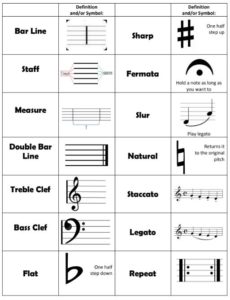
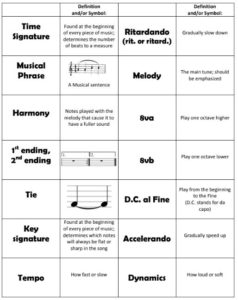
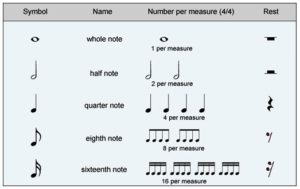
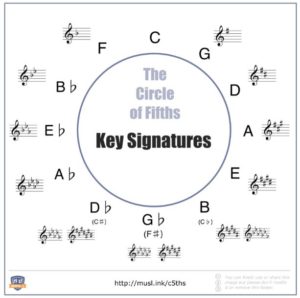


So Good
I learned a lot because I read and saw the examples of the notes.